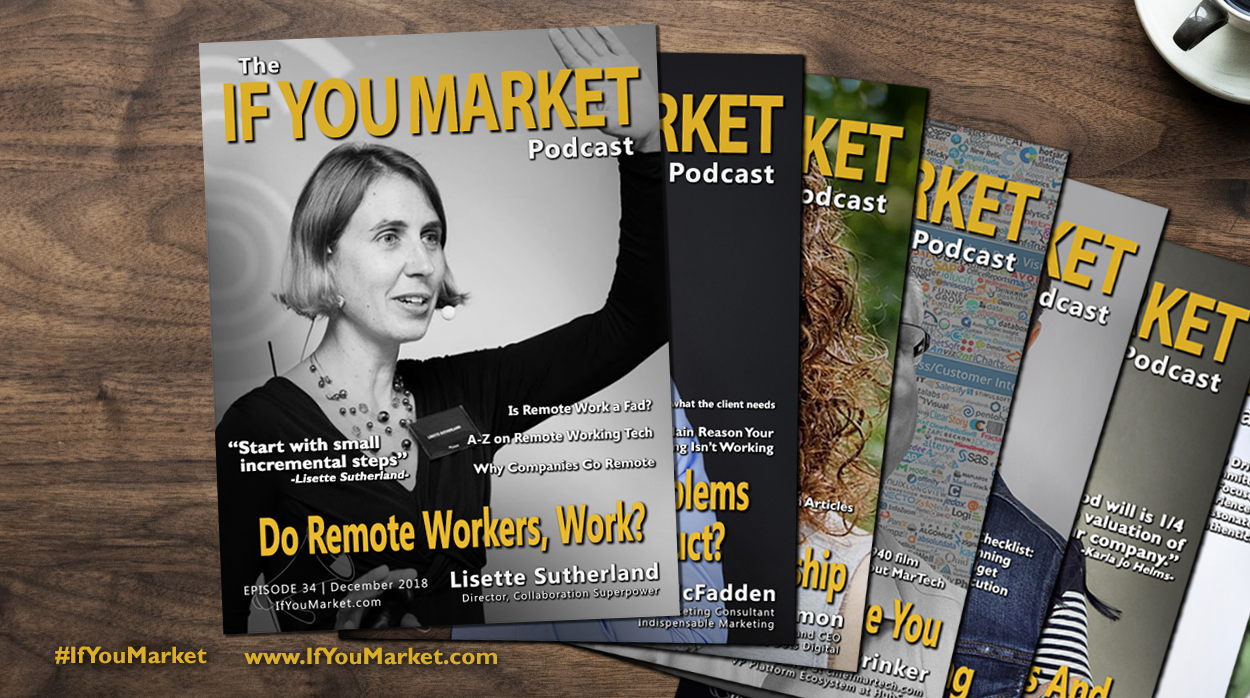
This week on the If You Market podcast we speak with Lisette Sutherland of Collaboration Superpowers about both managing remote workers and working remotely. Lisette also shares her least favorite video conference software and much more.
Lisette Sutherland is a remote-working German-born American living in the Netherlands who is totally jazzed by the fact that it’s possible to work from anywhere. In fact, it’s not just possible; it’s completely, productively workable – if you do it right. Her company, Collaboration Superpowers, shares just how to do it right in a variety of formats:
 Work Together Anywhere: A Handbook on Working Remotely — Successfully — for Individuals, Teams, and Managers
Work Together Anywhere: A Handbook on Working Remotely — Successfully — for Individuals, Teams, and Managers- Speaking engagements and webinars
- Work Together Anywhere workshops
- Weekly podcasts featuring interviews with remote-working experts
- Bi-monthly newsletter
- Guest appearances at Pilar Orti’s 21st-Century Work Life podcasts
Lisette has given presentations at a wide range of events, from conferences and Meetups all over the world to a TEDx talk on the theme Unbox the Future in Kaunas, Lithuania. Her workshop clients include Air France, ING, CrossKnowledge (Wiley), Rabobank, and Saint-Gobain. In January 2018, both the Collaboration Superpowers podcast and the 21st-Century Work Life podcast series were deemed among the Best Remote Work Podcasts by Workplaceless. Lisette is also the office manager for the 100 percent remote company Happy Melly, a global professional happiness association dedicated to helping people be happier at work.
Subscribe to the If You Market Podcast on iTunes: www.goo.gl/nfMMtW
Youtube: https://youtu.be/qBsAySrqE6Y
Contact Lisette Sutherland
LinkedIn: https://www.linkedin.com/in/lisettesutherland/
Website: www.collaborationsuperpowers.com
Book: https://www.collaborationsuperpowers.com/book/
Workshop: https://www.collaborationsuperpowers.com/anywhereworkshop/
Tools for remote Working: www.collaborationsuperpowers.com/remote-resources/
If you have questions about the If You Market podcast or would like to suggest a guest, please email us at info@IfYouMarket.com.
You can subscribe to The If You Market Podcast on apple iTunes or where ever you get your podcasts.
Transcript:




